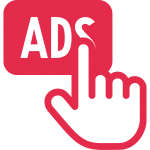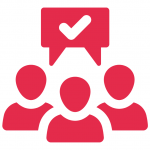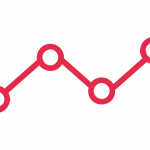
Is your website falling short on revenue despite receiving ample traffic? The web design tips we’ve discussed in this guide will prevent that from happening any longer!
If so, converting those website visitors into paying customers is the key, and this article unveils innovative web design tips and strategies to achieve just that.
But first, let’s get into the types of consumers who will land on your website. This is crucial to understanding consumer psychology and gauging how close they are to your target audience, and whether you want them on your website in the first place.
Exploring Modern Consumer Types
In the era of technology and web design tips, Google identifies three consumer archetypes: The Curious, The Demanding, and The Impatient. Their preferences in web design tips shape expectations, making it crucial for your website to offer a seamless experience.
Unraveling Conversion Challenges
Before delving into solutions, understanding why your high-traffic website isn’t converting is paramount.
Are you attracting the right audience?
Pop-ups might be hindering the user experience, and finding necessary information could be a challenge.
Pop-ups and Navigation Woes
While pop-ups can be useful, overloading your site with them hampers the user experience.
Limiting pop-ups to one per page with a relevant Call to Action (CTA) is advised.
Moreover, a clutter-free, well-organized layout with intuitive navigation enhances the visitor’s journey.
Top 10 Web Design Tips For Small Business Owners
1. Simplify Navigation

Ensure your website’s navigation structure is not just user-friendly but also versatile, allowing visitors to seamlessly transition between pages, regardless of their entry points.
Recognize that not all visitors start their journey on the homepage; therefore, a well-organized navigation system should guide them toward specific products or information from any page they land on. By keeping the number of options in each navigation group between five to seven, you can prevent visitors from feeling overwhelmed, maintaining focus on their goals.
Additionally, incorporate a search function aligned with the three-click rule, facilitating efficient access to desired content with minimal clicks.
2. Optimize Loading Speed

Prioritize swift loading times, especially for mobile users, recognizing its critical impact on user experience.
According to the 2019 Page Speed Report, slow-loading pages significantly decrease the likelihood of return visits, with a substantial number of users admitting to leaving such sites. Beyond enhancing user satisfaction, rapid loading positively influences your website’s search engine optimization (SEO), contributing to improved visibility.
Utilize tools like Google’s free diagnostics to identify and address loading issues promptly, ensuring a seamless and efficient browsing experience for your visitors.
3. Craft Persuasive CTAs

Elevate the effectiveness of your Call-to-Action (CTA) buttons beyond transactional prompts.
Anticipate the needs of your audience and recommend relevant content that aligns with their interests. The strategic placement and color of your CTA button are paramount for visibility and engagement. Adhering to the rule of thirds, highlight essential elements like the CTA button to guide the user’s attention effectively.
Prioritize clarity and ease of use in your website design, ensuring landing pages facilitate smooth transitions, and guiding users seamlessly through the buyer’s journey.
4. Compelling Content Creation

Once you’ve identified your target audience, delve into content creation that not only informs but captivates. Craft content that resonates with your audience, making them eager to explore more about your products or services.
Emphasize relevance to their needs and interests, establishing a connection that goes beyond mere information. Your content should act as a compelling bridge, guiding visitors toward a deeper understanding of your offerings and encouraging them to take the next steps in their customer journey.
5. Know Your Audience

Identifying your target audience is foundational to successful conversion. Tailor your marketing and sales efforts to align with the preferences and behaviors of your specific audience segment. Understand their demographics, interests, and pain points to create a personalized and resonant experience.
By aligning your strategies with the characteristics of your target audience, you position your website as a more attractive and relevant destination, increasing the likelihood of successful conversions.
6. Offer Incentives

Capture the attention of potential customers by introducing incentives such as free trials or discounts. This approach not only encourages exploration of your products or services but also mitigates the perceived risk for hesitant visitors. Offering a risk-free opportunity to experience the value you provide increases the likelihood of turning curious visitors into paying customers. Craft persuasive messaging around these incentives, emphasizing the unique value proposition that sets your offerings apart from competitors.
7. Integrate Live Chat

Enhance user engagement by incorporating a live chat feature on your website. Real-time conversations cater to the preferences of modern consumers, providing immediate assistance and addressing queries promptly.
According to McKinsey, many B2B customers prefer a combination of digital and human interactions when engaging with a company. Live chat serves as a valuable tool to establish connections, boost engagement, and significantly improve the chances of converting website visitors into satisfied customers.
8. Leverage Social Proof

Boost your website’s credibility by showcasing social proof through customer reviews, testimonials, and credible endorsements. Recognize that consumers trust the experiences and opinions of their peers more than traditional marketing messages. Highlight positive customer stories, awards, and recognitions across various platforms to instill confidence in your brand.
According to a study by G2, Crowd, and Heinz Marketing, a significant majority of respondents expressed a higher likelihood of purchasing a product or service after reading a trusted review. Social proof acts as a powerful validation, influencing potential customers positively.
9. Gamify User Experience
Harness the power of gamification and interactive content to elevate your website’s conversion rate. Studies indicate that implementing gamification can result in a sixfold increase in conversion rates. Customers appreciate interactive interfaces and business processes that add an element of enjoyment to their experience.
While implementing gamification may be perceived as a capital-intensive endeavor, you can start with simple, cost-effective initiatives. Enhance customer engagement by gamifying processes such as sign-ups and purchases, effectively turning your website into an interactive and enjoyable platform.
10. Continuous Improvement

Establish a culture of continuous improvement by consistently monitoring your website’s performance. Implement A/B testing to assess the effectiveness of different landing pages and strategies. Embrace a mindset of trial and error, recognizing that the digital landscape is dynamic, and user preferences evolve.
Regularly evaluate and refine your approach to ensure that your website remains adaptive and responsive to the ever-changing demands of your audience.
By staying vigilant and proactive, you position your website for sustained success in converting visitors into loyal customers.
Concluding the pro web design tips
In the realm of web design tips, understanding and adapting to evolving consumer behaviors is the cornerstone of successful website conversion. By implementing these transformative strategies, your website can evolve into a customer-conversion powerhouse.
Stay ahead by constantly refining and optimizing your approach. Follow these web design tips and more guides from us to ramp up your organic client gain!
People Also Read:
9 Actionable Tips For SEO Beginners.
Rank higher with these 5 Mobile SEO Tips.




